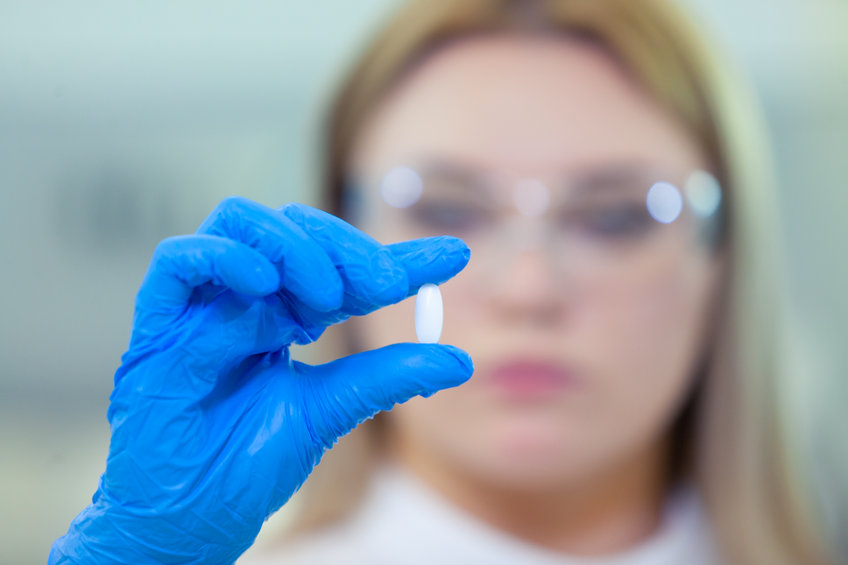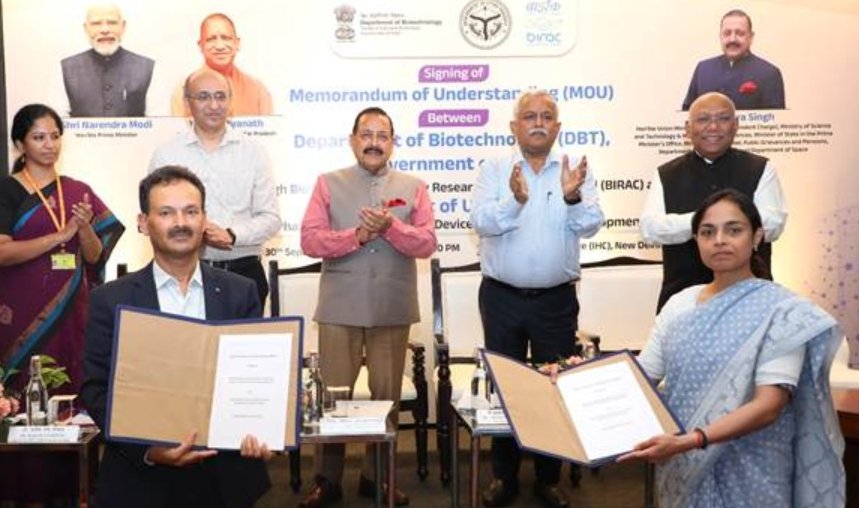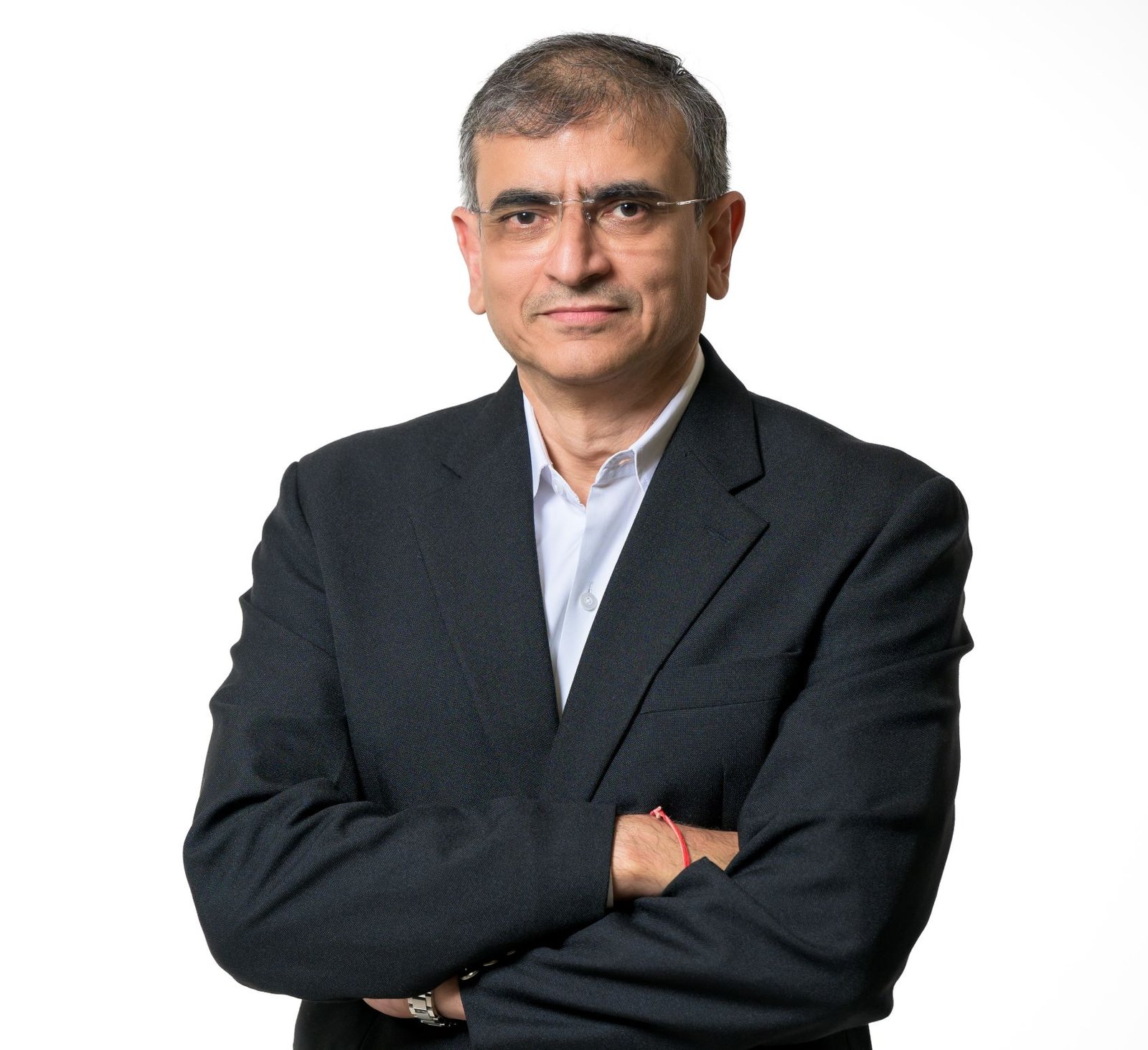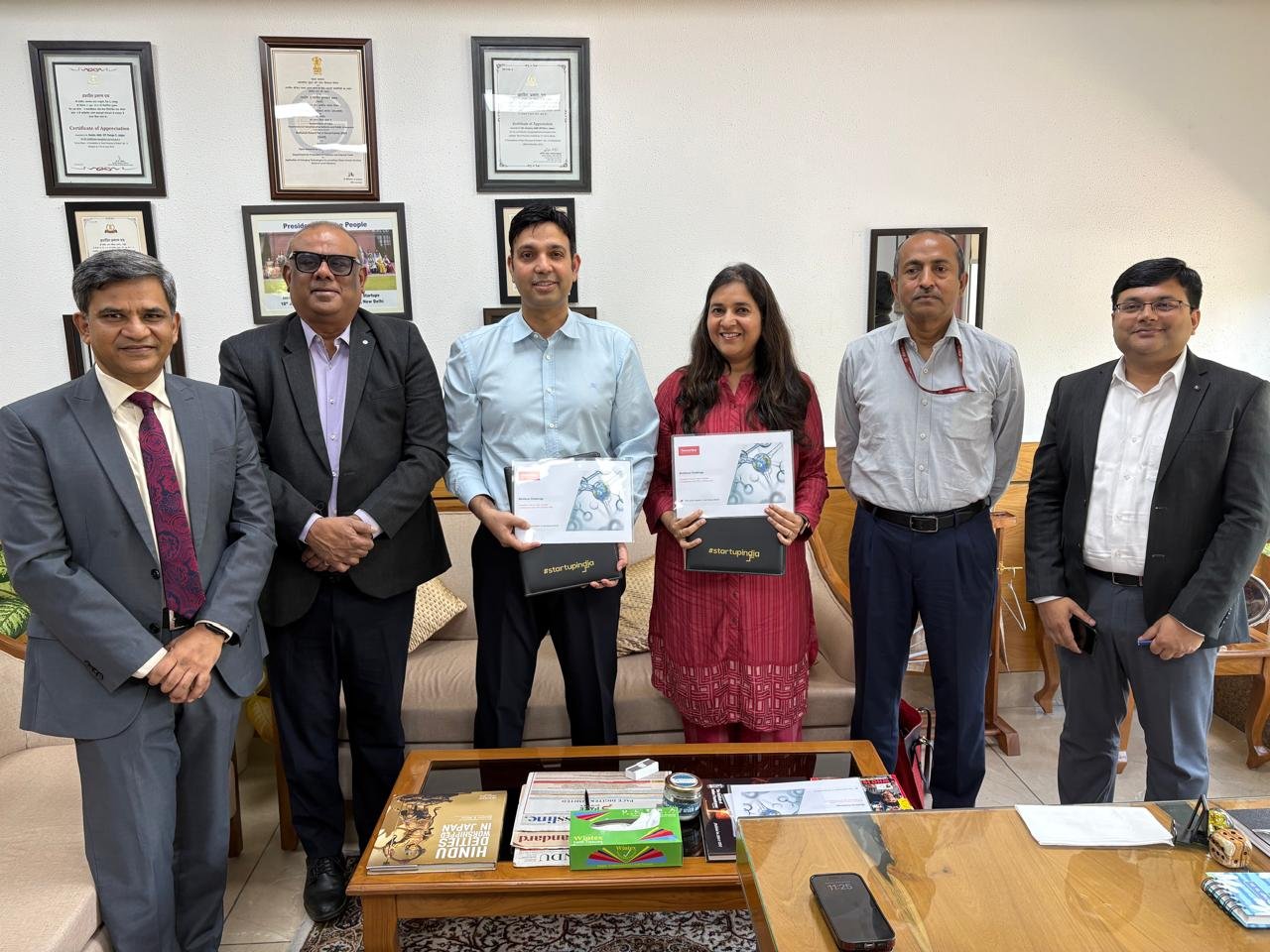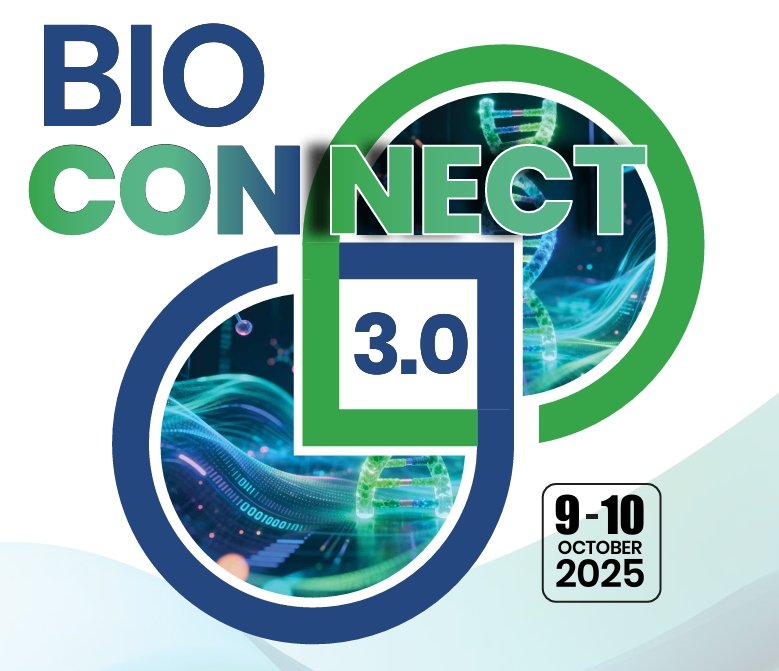Can Indian Companies Compete with MNCs in GLP-1 Production?
July 01, 2025 | Tuesday | Features | By Sanjiv Das
With the patents for blockbuster diabetes and obesity drugs, particularly Semaglutide set to expire in India in March 2026, it is expected to trigger a major shift in the market. Indian pharmaceutical companies will be able to launch generic versions of these high-demand GLP-1 receptor agonist drugs. This is a pivotal moment in the offering that will democratise access to expensive therapies that has been till now dominated by multinational companies.
image credit- shutterstock
The patent war can become uglier at times and the pharma industry is no exception to this. Indian and MNC pharma companies are at loggerheads when it comes to global patent disputes. That Indians get affordable and accessible medicines is what the Government of India prioritises. However, MNC pharma companies want to dominate the market armed with patents.
The global pharmaceutical industry is bracing itself for the upcoming patent cliff which is touted to put an estimated $236 billion in drug sales in jeopardy for the innovator companies. Between 2025 and 2030, the patents on a number of blockbuster drugs spanning therapeutic areas including diabetes, cardiovascular, oncology immunology, and ophthalmology are set to expire, thereby opening up the market for generic and biosimilar manufacturers.
While patent cliffs by themselves are not unprecedented, they have previously involved relatively simple chemical entities. By contrast, the current wave of expiries includes several biologics, structurally complex small molecules, and drugs which require novel delivery systems.
India's patent history
India supplying 20 per cent of the world’s generics and exporting to over 200 countries is being supported by the current patent regime. It has ensured access to affordable medicines for diseases like cancer, TB and HIV AIDs. Also, pharma companies have been able to invest more on R&D.
The Patents Act of 1970 initially only allowed process patents for pharmaceuticals, enabling Indian companies to manufacture generic versions of patented drugs using alternative processes. The Patents (Amendment) Act, 2005, brought India into compliance with the WTO’s TRIPS agreement, introducing product patents for pharmaceuticals and strengthening IP protection.
Patent disputes
The patents of many blockbuster diabetes and obesity drugs like Semaglutide will expire from 2026 onwards. Many Indian pharma companies are in the fray to grab the market share that has been dominated by MNC companies for years. Incentives are in place to promote local manufacturing of GLP-1 drugs by 2026. This may lead to more nasty court cases.
The Delhi High Court has issued an interim order restraining Dr. Reddy’s Laboratories and OneSource Specialty Pharma from marketing Semaglutide, the active ingredient in Novo Nordisk’s weight loss drug Wegovy, in India.This is an ongoing case. The order was passed following a patent infringement suit filed by the Danish pharmaceutical company, which is preparing to launch the blockbuster drug in the Indian market.
In a statement, Novo Nordisk said it is taking active steps to protect its inventions in India. The company added that its Semaglutide patents are protected in the country and that it expects continued support for innovation and intellectual property protection. “This will help stimulate companies’ motivation to develop innovative medicines and bring new treatments to patients,” it said, adding that it would not comment further on a sub-judice matter.
In another episode, the Delhi High Court rejected Swiss MNC F. Hoffmann-La Roche’s petition seeking to restrain Hyderabad-based Natco Pharma from infringing its product patent for Risdiplam compound used for treating spinal muscular atrophy.
In a majority of the cases, the originator is aware of the impending loss of patent and therefore erosion of market share and loss of profit. And remains constantly engaged in research and development much before the loss of patent to have a robust pipeline to be able to introduce follow-on molecules which provide better efficacy, and safety compared to the earlier molecules.
Is this a golden opportunity?
The forthcoming patent expirations of blockbuster GLP-1 receptor agonists present a transformative opportunity for Indian pharma companies. As patents for Semaglutide and Tirzepatide are set to expire between 2026 and 2027, Indian firms are positioned to capitalise on a rapidly expanding market.
With India’s diabetes population projected to reach 212 million and obesity cases at 70 million, the convergence of patent cliff events, government production incentives, and the rising disease burden creates unprecedented market entry opportunities. The Indian GLP-1 market is expected to reach $350 million by 2030, representing a 25 per cent CAGR, while global markets could expand to $156 billion at a 30 per cent CAGR.
Piyali Chatterjee Konar, Executive Vice President, Head – CX/UX/B2B, Hansa Research Group mentions, “India can capitalise on this opportunity through big Indian pharma giants like Biocon, Sun Pharma, Cipla, Dr. Reddy’s and Lupin are already preparing to manufacture generic versions of GLP-1 drugs post-patent expiry. Indian pharmaceutical companies have a massive opportunity to disrupt the industry and establish themselves as key players. If they get this right it can be a game changer for Indian pharma business.”
Sharing his thoughts on this Hari Kiran Chereddi, Managing Director, HRV Global Life Sciences and CEO, New Horizon Global Pharma mentions, “GLP-1 analogues such as Semaglutide are India’s next chance to dominate complex generics. For this, India must deepen its capabilities in peptide synthesis, submit early-stage DMFs and collaborate with regulators extensively, invest in regulated market-capable CDMO platforms and encourage PPPs to create innovation. Many companies are exploring long-chain peptide intermediates and the GLP-1 ecosystem actively to create a high-trust regulatory map. It is not reverse engineering that is on their mind but rather designing for global scalability and compliance.”
Says Girdhar Balwani, Director - Cadila Pharmaceuticals and Hypothalamus, “It is expected that in the post-patent-expiry environment, we will witness the launch of newer molecules over time from many originator / international research companies. Based on an analysis of the international R&D pipeline, these new products will offer advantages over the earlier products in terms of efficacy and safety. We should expect that these products will be aggressively marketed in India in the future given the size of the Indian market.”
Start of leadership test
Domestic players are rapidly enhancing their expertise in biosimilars and peptide-based biologics, bolstering R&D capabilities, expanding production infrastructure, and pursuing strategic collaborations. The approaching patent expirations of blockbuster GLP-1 receptor agonists like Semaglutide provide an unprecedented opportunity for Indian pharmaceutical companies.
Historically, MNCs have dominated these molecules due to patent protections, strong R&D, and brand loyalty. However, as these patents expire, the entry barrier dissolves. Indian pharma, with its established manufacturing base, wide field force, price advantages and vast domestic market, is perfectly positioned to take over the market.
Dr Karishma Atul Shah, Founder and Managing Partner, Pronto Consult, market research firm, says “Patent expiries are not just some events, they are market resets. When exclusivity ends, new players can enter the field, pricing drops, and patient access increases. But not all players benefit equally. Those who act fast, position smartly, and engage doctors meaningfully are the ones who stand to win. This is not just about launching brands it is about launching new brands in new forms for a new healthcare consumer. First-to-market launches are critical. Early brand activation, regulatory readiness, and supply chain alignment will define success. The expiry of patents is not the expiry of opportunity, it is the start of a leadership test for Indian pharma.”
Indian firms can leverage their manufacturing scale, regulatory agility, and global supply chain networks to rapidly enter the GLP-1 market post-patent expiry. Strategic alliances, in-licensing deals, and co-development partnerships with global firms can further enhance market reach and innovation. Indian companies can differentiate through affordable GLP-1 formulations, patient support programmes, and localised distribution strategies. Companies that effectively leverage this patent cliff window while addressing affordability and accessibility barriers will not only transform the domestic diabetes and obesity treatment landscape but establish India as a global leader in GLP-1 therapeutic manufacturing and innovation.
A competitive edge
Indian players are not the only ones viewing this environment favourably. Innovator companies are also shifting their strategies to leverage this opportunity. Innovators and generic companies are collaborating to launch new products. These strategic collaborations are taking on a diverse range of shapes and forms including out-licensing of brands, contract research and manufacturing services partnerships, co-marketing and co-promotion arrangements, technology transfers to enable domestic manufacturing, and even co-development of the generic drug or biosimilar.
Eshika Phadke – Leader, Pharmaceutical, Lifesciences & Healthcare, Nishith Desai Associates, an innovative law firm opines, “The innovator companies can retain value beyond patent expiry, while Indian companies gain a competitive edge against other generic manufacturers, which becomes especially relevant given the recent quality-related concerns that have emerged about drugs manufactured in India. From a regulatory strategy perspective also, both parties stand to benefit substantially, especially when the manufacturing activities are taking place domestically. Depending on the type of collaboration, these arrangements could potentially result in more streamlined approvals, wider access to government buyers and temporary relief from price control.”
Dr Rashmi Chaturvedi Upadhyay, Pharma & Biotech Strategy Consultant, Dialectica, a global B2B information services firm, says, “The convergence of patent expiries for blockbuster GLP-1 drugs, India’s substantial disease burden, and supportive government policies creates an unprecedented opportunity for Indian pharmaceutical companies. Companies that effectively leverage this patent cliff window while addressing affordability and accessibility barriers will not only transform the domestic diabetes and obesity treatment landscape but establish India as a global leader in GLP-1 therapeutic manufacturing and innovation. The projected market expansion signifies potential democratisation of life-changing therapies for millions of patients across India and emerging markets globally.”
Probable challenges
Indian pharma companies need streamlined regulatory frameworks, enhanced clinical trial infrastructure, and supportive financial mechanisms such as government incentives or public-private partnerships to foster innovation and ensure affordable patient access.
Saransh Chaudhary, President, Global Critical Care, Venus Remedies and CEO, Venus Medicine Research Centre (VMRC) says, “Developing GLP-1 receptor agonists at scale involves significant challenges, including high manufacturing costs, limited domestic expertise in complex peptide synthesis, and the necessity of specialised infrastructure to comply with stringent regulatory standards. Additionally, anti-diabetic medications typically require extensive and lengthy clinical trials, significantly raising development costs and risks. Moreover, India’s current reimbursement landscape, characterised by low insurance penetration and high out-of-pocket expenses, poses further obstacles to patient access to these advanced therapies.
Munjal Patel, Director, Lincoln Pharmaceuticals is convinced that with the right mix of innovation, investment, and policy support, Indian pharma is capable not just of repeating success in generics but of becoming a hub of excellence in high-quality, affordable metabolic medicines globally. However, he mentions, “GLP-1 drugs are complex peptide-based biologics that require advanced manufacturing capabilities, cold-chain logistics, and strict quality control. The development and scale-up of generics in this segment demand significant R&D investments and regulatory expertise with strict adherence to protocols. Moreover, building trust in global markets will require consistent demonstration of efficacy, safety, and affordability — for which large-scale trials and rigorous testing are essential.”
Says Vishal Manchanda, Sr VP, President Institutional Research, Systematix Group, “The key challenge as of now for companies is to have their manufacturing/supply chain and regulatory approval in place so that they go full throttle when the market formation begins. While companies have initiated clinical trials and regulatory filings to launch timely, they are yet to garner regulatory approval. Since Semaglutide is a peptide, the regulatory hurdles are likely to be higher and we might not see everyone reach the market on day one. The other core challenge to commercial success is pricing as it would be crucial to create a larger scale acceptance in the market.”
Sreekanth Muttineni, President, Formulations Operations, MSN Laboratories, mentions, “Big companies fiercely protect their patents, which include the manufacturing process, methods, and functionalities of their products, by resorting to court battles. Consequently, new products might not be released to the market for an extended period, even after their patents expire. Indian players will face intense pressure from payers demanding ever-lower prices while offering discounts. This pressure could squeeze margins, even with increased volume. To defend market share, MNCs will aggressively employ contracting strategies, introduce next-generation products, and potentially authorise generics.”
Agilent Technologies sees a strong and sustained growth trajectory for the GLP-1 drug segment and the broader biopharmaceutical industry. Despite the promising market outlook, scaling R&D and manufacturing for GLP-1 receptor agonists in India presents several complex challenges. Says Nandakumar Kalathil, Country General Manager (CGM) - India, Agilent Technologies, "These biologics require precise analytical characterisation to ensure structural integrity; rigorous quality control to meet international regulatory standards; scalable manufacturing processes that maintain consistency across batches etc. Indian pharmaceutical companies often face limitations in access to high-end instrumentation, the technical complexity of biologics handling, and the need for rapid scale-up to meet market timelines. These challenges are compounded by evolving regulatory landscapes and the long biosimilar development timelines, especially as key patents for some GLP-1 drugs extend to 2033."
Future
Indian pharma companies have a unique opportunity to disrupt the GLP-1 drug market. If they focus on affordability, innovation, and regulatory approvals, they could emerge as key players in diabetes and obesity treatment worldwide. Indian manufacturers can leverage their cost-effective production capabilities to export GLP-1 drugs globally, particularly to emerging markets with a high prevalence of diabetes and obesity. Incentives for local manufacturing and policy reforms could. This further boosts India's position in the global pharmaceutical industry.
Leveraging its proven capabilities in generics, expanding peptide manufacturing expertise, and strategic investments, India can gain a competitive advantage in this dynamic global market. With robust ecosystem support, India can become a formidable player in the global supply of affordable GLP-1 therapies, further solidifying its status as the pharmacy of the world.
Exploring ways to overcome patent challenges can be a win-win situation for Indian pharma players.
Sanjiv Das
sanjiv.das@mmactiv.com


